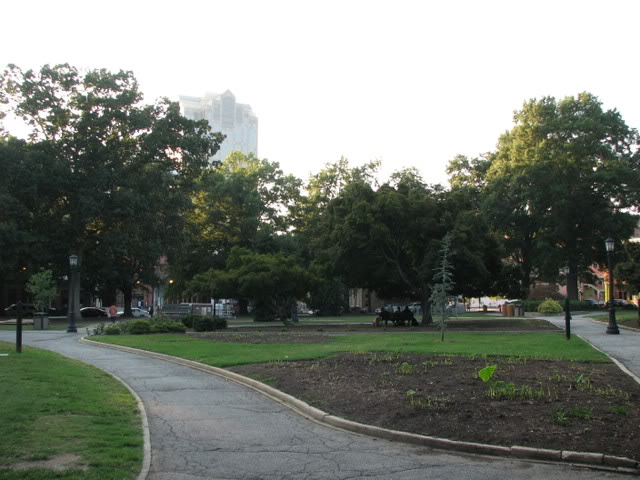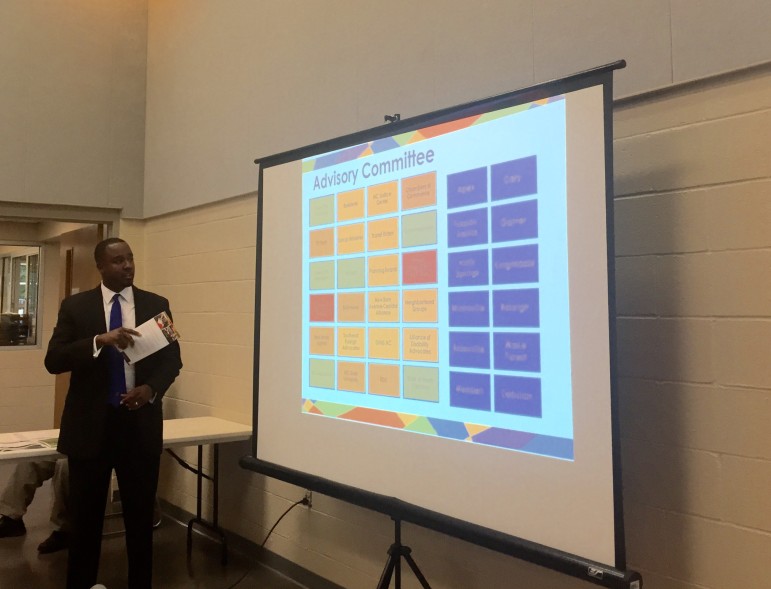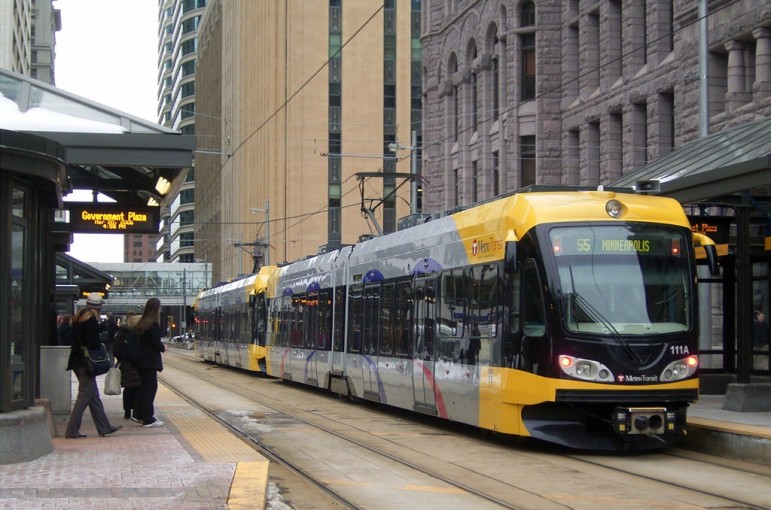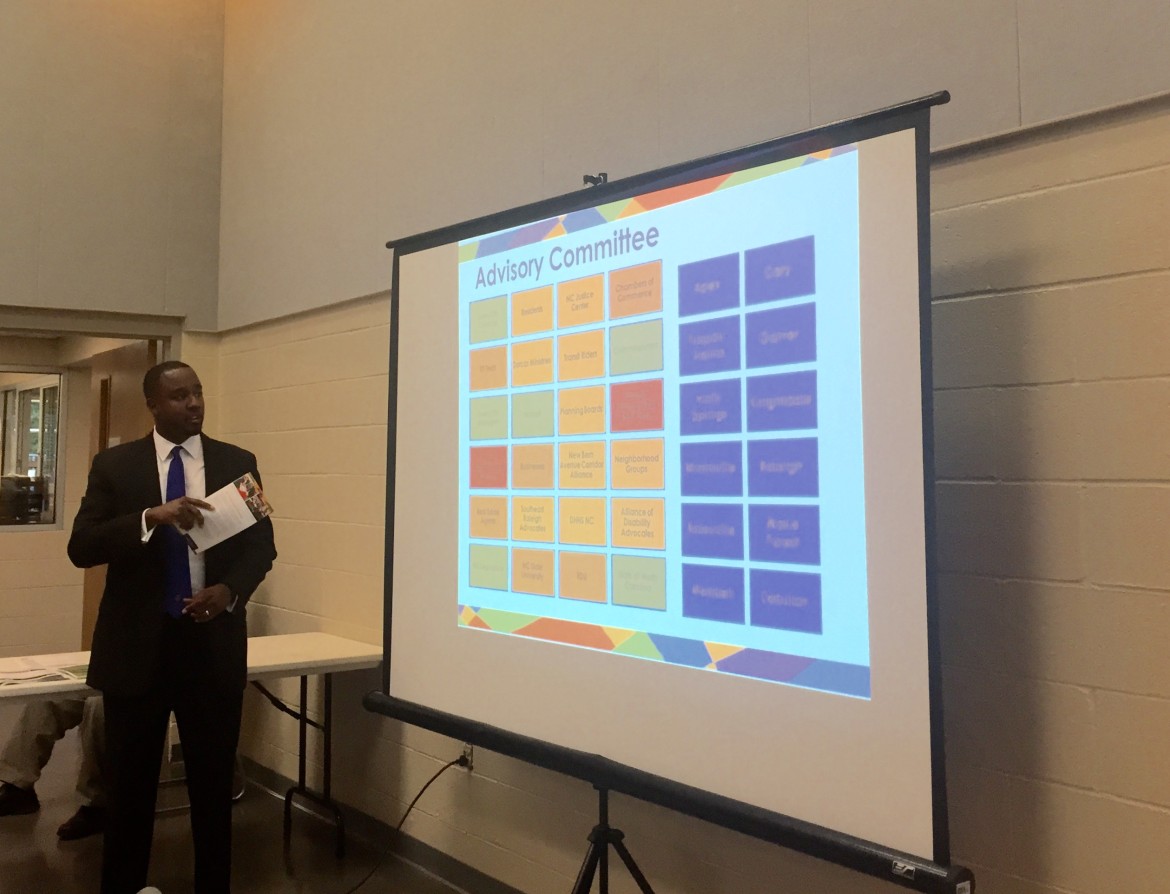A night before last week’s packed and heated public hearing on a citywide remapping case, the Central CAC held a crowded, lengthy meeting of its own.
The monthly meeting kicked off with an update on the redevelopment of Moore Square.
Grayson Maughan,with the city’s Parks, Recreation and Cultural Resources department said the city had been very pleased with the feedback they’d received so far on the project.
The master plan calls for a number of elements to be added to the site, including public art, a more family-friendly layout, and, potentially, structures for food and restrooms. Maughan said it was up to the state, which owns Moore Square, to decide whether to allow the structures on the property.

Moore Square. Photo by Leo Suarez.
Maughan also said efforts would be made to program events at Moore Square as if it was a neighborhood park.
“If an event is happening, it won’t close down the park for the entire weekend,” she said.
Maughan said they would be seeking approval in August from City Council to move into the schematic design phase, which will last through November, with construction estimated to begin in summer 2016.
The Wake Transit Plan
Corey Branch, a member of the Raleigh Transit Authority who is serving on a transit advisory committee for the Wake County Transit Strategy, presented to the CAC last week an update on a countywide effort to improve the public transit system.
The strategy is a partnership between a number of local organizations, including the county, several cities, GoTriangle and NC State.
Branch recently filed to run for council in District C against incumbent Eugene Weeks, who, alongside Councilor Stephenson, was also present that night.
Branch described the transit strategy as a ten-year plan for the future.

James Borden / Raleigh Public Record
Corey Branch presented the Wake Transit plan to the Central CAC on Monday, July 6
Ridership, Branch said, focuses on the highest-trafficked routes, which in Raleigh include New Bern Avenue and Capital Boulevard.
“Every time you see a bus on a route and it’s full, that’s ridership,” he said.
Branch described coverage as making sure everyone in a given area has access to public transit.
“Coverage means you may have a bus that goes out, and one or two people get on.”
The committee, Branch said, ultimately decided on a 60/40 split in favor of ridership, which naturally brings in more revenue.
He said while there has been a lot of talk on new and alternative forms of public transit, much of the focus was going to be on improving the existing bus system. Improvements will include higher frequency on existing lines, longer operating hours and limited holiday service.
Branch said the idea of a light-rail systems ad largely been ruled out, noting that because light-rail would not be compliant with Federal Railroad Administration regulations, it would be prevented from using existing rail lines. If light-rail was implemented, he said, it would require the build-out of an entirely new track system, which would be prohibitively expensive.

Wikimedia Commons
Light-rail transit, such as this one in Minneapolis, will likely not be coming to Raleigh
An alternative to rail rapid transit, he said, would be bus rapid transit, which would help combat the often-long travel times on existing routes.
No matter the final decisions made on the plan, Branch said, “bus service will improve.”
